Drive Scenic

What are the most scenic routes for a road trip in the US ?
The United States is home to some of the most breathtaking landscapes in the world, making it an ideal destination for a road trip. Here are some of the most scenic routes you can take: 1. Pacific Coast Highway (California) - This iconic drive takes you along the coastline of California, offering stunning views of the ocean and rugged cliffs. Highlights include Big Sur, San Francisco, and Los Angeles. 2. Blue Ridge Parkway (Virginia/North Carolina) - A 469-mile scenic drive that winds through the Appalachian Mountains, taking you through lush forests, rolling hills, and charming small towns. Highlights include Shenandoah National Park, Asheville, and Great Smoky Mountains National Park. 3. Going-to-the-Sun Road (Montana) - A 52-mile scenic drive through Glacier National Park in Montana, taking you through snow-capped mountains, alpine meadows, and crystal-clear lakes. Highlights include Lake McDonald, Logan Pass, and St. Mary Lake. 4. Hana Highway (Hawaii) - A 52-mile winding road that runs along the coastline of Maui in Hawaii, taking you through tropical rainforests, cascading waterfalls, and black sand beaches. Highlights include Wailuku Falls, Hana Town, and Waianapanapa State Park.

What are the most scenic routes for a backpacking journey through Europe ?
Europe offers diverse landscapes and rich cultural heritage, making it an ideal destination for backpacking journeys. Here are some of the most scenic routes for exploring Europe on foot: 1. The Grand European Trail spans from Portugal to Estonia, offering diverse terrain and opportunities to explore major cities like Madrid, Paris, and Berlin. 2. The Camino de Santiago is a network of pilgrimage routes leading to Santiago de Compostela in Spain, featuring charming small towns and local gastronomy. 3. The European Waterways allow travelers to explore the continent's rivers and canals at their own pace, with scenic views of castles, vineyards, and villages along the way. 4. The Scottish Highlands offer breathtaking natural scenery, including towering mountains, deep lochs, and lush green valleys, as well as opportunities to spot wildlife and visit ancient castles and distilleries.

What are some of the most popular national parks for outdoor exploration in the US ?
The United States is home to a vast array of national parks that offer incredible opportunities for outdoor exploration. Here are some of the most popular ones: 1. Yellowstone National Park in Wyoming, Montana, and Idaho features geysers, hot springs, wildlife viewing, hiking, camping, and fishing. 2. Yosemite National Park in California boasts waterfalls, granite cliffs, hiking trails, and scenic drives. 3. Grand Canyon National Park in Arizona offers hiking, camping, mule rides, and breathtaking views of the canyon. 4. Zion National Park in Utah has red rock formations, hiking trails, camping, and scenic drives. 5. Rocky Mountain National Park in Colorado features mountain peaks, hiking trails, wildlife viewing, and scenic drives. 6. Acadia National Park in Maine offers coastal scenery, hiking trails, carriage roads, and historic sites. 7. Glacier National Park in Montana has mountain peaks, glaciers, hiking trails, and wildlife viewing. 8. Joshua Tree National Park in California features desert landscapes, hiking trails, rock climbing, and stargazing. 9. Shenandoah National Park in Virginia boasts mountain scenery, hiking trails, wildlife viewing, and scenic drives. 10. Arches National Park in Utah has natural sandstone arches, hiking trails, rock climbing, and scenic drives.
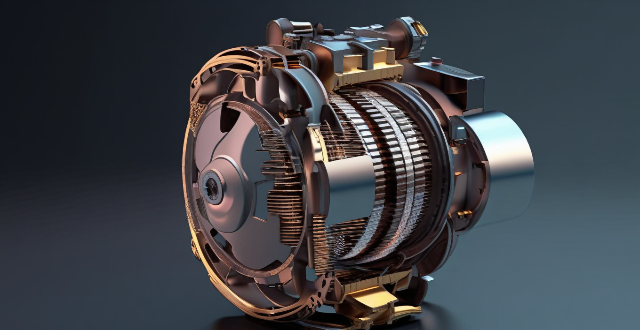
What are the advantages and disadvantages of using a combination motor drive compared to a single motor drive ?
The combination motor drive has several advantages over a single motor drive, including improved performance, enhanced reliability, flexibility in design, energy efficiency, and modularity and scalability. However, it also has disadvantages such as complexity, cost, space requirements, synchronization issues, and integration challenges.
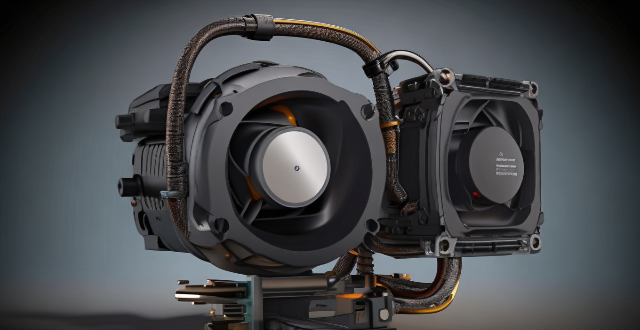
How does a single motor drive compare to a dual motor drive ?
This article compares single motor drives and dual motor drives based on their performance, efficiency, cost, and applications. Single motor drives can only control one motor at a time, while dual motor drives can control two motors simultaneously. Dual motor drives offer higher overall torque and better synchronization between multiple motors, but they also consume more power and require more maintenance. Single motor drives are typically less expensive and well-suited for low power applications with simple movement profiles, while dual motor drives are appropriate for high power applications with complex movement profiles requiring precise synchronization. The choice between a single motor drive and a dual motor drive depends on the specific requirements of the application.

What are the benefits of using a combination motor drive system ?
Combination motor drive systems offer benefits such as improved efficiency, increased reliability, flexibility, and enhanced control. These systems combine the advantages of different types of motors to create a more efficient and reliable drive system. They are ideal for a wide range of applications and can help businesses save money on energy costs while reducing downtime and maintenance requirements.
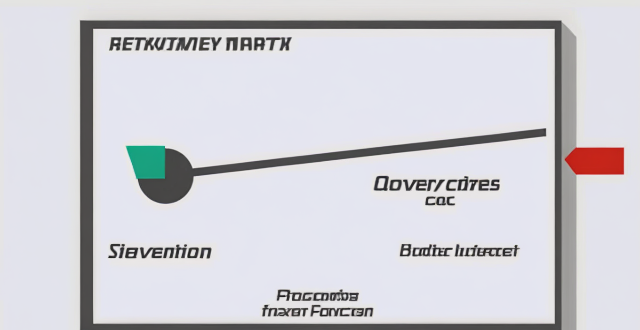
How do I choose the right drive motor for my application ?
When selecting a drive motor for your application, considerWhen selecting a drive motor for your application, considerrque and speed, power duty cycle, cost, size, control compatibility, safety compliance, maintenance, and manufacturer reputation. This comprehensive guide helps ensure you choose a motor that meets your needs effectively and efficiently.
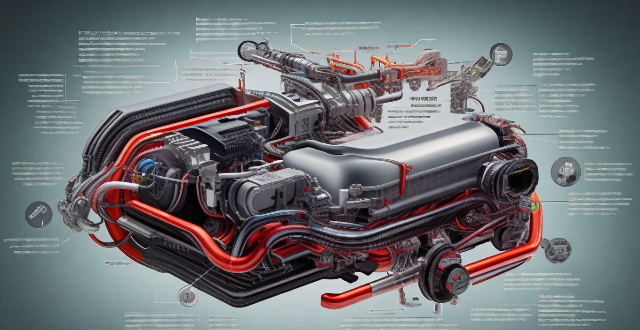
How do I install and maintain a combination motor drive system ?
A combination motor drive system, also known as an integrated drive system or hybrid drivetrain, is a complex assembly of components designed to deliver power from the engine to the wheels of a vehicle. It typically includes an internal combustion engine, one or more electric motors, and a transmission that may incorporate both mechanical and electronic control systems. This guide will walk you through the installation and maintenance process for such a system.
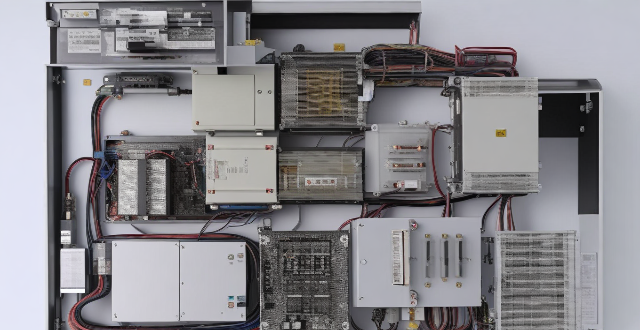
What are the advantages of using a single motor drive system ?
A single motor drive system is a type of electric motor control system that uses only one motor to power a machine or equipment. This system has several advantages over other types of drive systems, including simplified design and maintenance, improved efficiency and performance, increased reliability and longevity, and greater flexibility and versatility. These benefits make it an attractive option for many industrial applications where precise control and efficient operation are essential.

How do hub motors compare to mid-drive motors ?
Electric bicycle motors come in two primary configurations: hub motors and mid-drive motors, each with unique characteristics, advantages, and disadvantages suitable for different riding styles and preferences. Hub motors are integrated directly into the bicycle wheel hub, while mid-drive motors are mounted in the center of the bicycle, near the bottom bracket. Hub motors are generally simpler to install and maintain, quieter, and less expensive than mid-drive motors but are less efficient at higher speeds and can affect bike handling due to changes in wheel diameter and weight distribution. Mid-drive motors offer more efficient power delivery at higher speeds, better weight distribution, and adaptability to various wheel sizes but are generally more complex to install and maintain, louder during operation, and more expensive. Choosing between a hub motor and a mid-drive motor depends on what you value most in an e-bike, such as simplicity, quiet operation, lower cost, efficiency at higher speeds, better weight distribution, or adaptability.

Can you recommend a scenic bike path for beginners ?
Cycling is a great way to stay active while exploring nature. Here are some recommendations for scenic bike paths suitable for beginners: 1. Flat and Paved Trails: The Great Allegheny Passage in Pennsylvania offers a smooth surface with lush forests and rolling hills; Lake Tahoe Bike Path in California & Nevada circles around Lake Tahoe with breathtaking views; The Rail Trail in Victoria, Australia follows an old railway line with diverse scenery. 2. Natural and Dirt Trails: Captain Lawrence Gilroy Nature Trail in Ontario, Canada takes you through a beautiful forest setting; Maah Daah Hey Trail in North Dakota offers a mix of terrains with stunning views of the Badlands; Chautauqua Park Trail in Boulder, Colorado winds through the foothills of the Rocky Mountains with both paved and natural surfaces. Tips for beginner cyclists include starting slow, choosing the right gear, staying hydrated and fueled, being aware of surroundings, and having fun.

Is it possible to upgrade a machine to a single motor drive ?
The text discusses the possibility of upgrading a machine to a single motor drive. It outlines key considerations such as compatibility, performance requirements, and cost considerations. It also provides steps for upgrading to a single motor drive, including evaluating the machine, selecting a suitable motor drive, modifying the machine, installing the motor drive, and testing and optimizing the machine.

What are the advantages of using a drive motor in industrial equipment ?
Drive motors are crucial components in industrial equipment, offering advantages such as increased efficiency, improved accuracy and precision, flexibility and customization, reduced maintenance and downtime, enhanced safety, and environmental benefits. By optimizing processes for maximum productivity and energy savings, drive motors lead to reduced operating costs and increased profitability for businesses. They also provide precise control over machinery movements, allowing for accurate positioning and repeatable operations, which is particularly important in applications where precision is critical. Drive motors offer flexibility in adjusting the speed, direction, and torque of machinery, accommodating changes and meeting specific requirements. Modern drive motors are designed with reliability and durability, minimizing downtime and increasing productivity. They can also be equipped with safety features to prevent accidents and injuries. Finally, drive motors have positive environmental impacts by improving efficiency and reducing energy consumption, leading to reduced greenhouse gas emissions and less waste material produced during manufacturing processes.

How can I choose the right combination motor drive for my application ?
When selecting a combination motor drive for your application, consider factors such as the type of motor (AC, DC, stepper, or servo), application requirements (load characteristics, speed and torque needs, control precision), appropriate drive technology (VFDs, electronic speed controls, stepper motor drives, servo amplifiers), compatibility and integration with existing systems, performance features (efficiency, dynamic response, protection features), budget and cost considerations (initial and operating costs), and seek professional advice from manufacturers and technical support.
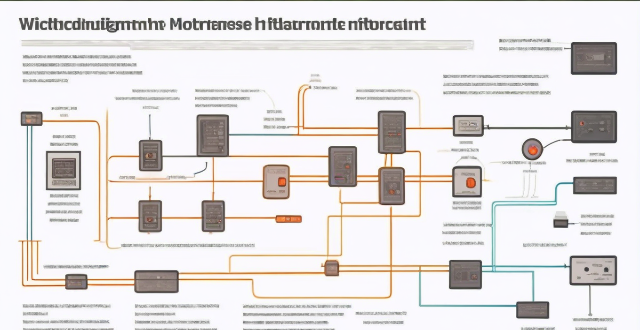
What are the challenges faced when designing a multi-motor drive system ?
The article discusses the challenges of designing a multi-motor drive system, including coordination between motors, power distribution, and synchronization. It emphasizes the importance of control algorithms, communication systems, mechanical design, efficiency optimization, power management, thermal management, timing control, feedback mechanisms, and mechanical design in achieving proper operation of the system. The article concludes that careful consideration of these factors is crucial for creating efficient and effective multi-motor drive systems.
![What are the best photography locations in [insert country/region] ?](/imgs/2f8b31ee-f62a-46e3-8828-37a4af062f9b.png)
What are the best photography locations in [insert country/region] ?
The text provides a comprehensive guide to the best photography locations in a specified country or region. It is divided into three main categories: Natural Wonders, Cultural Landmarks, and Scenic Viewpoints. Within each category, specific locations are suggested based on their unique features and photographic potential. Under Natural Wonders, Mountain Ranges, Waterfalls, and Coastal Landscapes are discussed with specific examples given for each type of landscape. Cultural Landmarks include Historic Buildings and Museums and Art Galleries, highlighting architectural beauty and artistic expression respectively. Lastly, Scenic Viewpoints cover Lookout Points and Parks and Gardens, showcasing panoramic views and natural beauty. The guide emphasizes the variety of photographic opportunities available in the specified location, encouraging photographers of all styles and preferences to explore and capture the essence of the place through their lenses.

**I accidentally deleted some items from my iCloud Drive, can I recover them ?
The article provides a step-by-step guide on how to recover accidentally deleted items from iCloud Drive, emphasizing the importance of acting within a 30-day window for potential recovery. It highlights key actions such as accessing the iCloud website, navigating to iCloud Drive, checking the "Recently Deleted" folder, selecting files for recovery, initiating the recovery process, and verifying the restoration of files. Additionally, it underscores the necessity of having sufficient storage space and maintaining regular backups to prevent future data loss incidents.

What are the key factors to consider when designing a combination motor drive system ?
Designing a combination motor drive system requires careful consideration of several key factors, including load requirements, efficiency and performance, control strategies, reliability and safety, and environmental considerations. Load requirements play a significant role in determining the type and size of the motor required for the drive system, while efficiency and performance are critical factors to consider when designing a motor drive system. Control strategies used in the motor drive system are also crucial, with common strategies including open-loop control, closed-loop control, and adaptive control. Reliability and safety are essential factors to consider when designing a motor drive system, with redundancy, fault detection and protection, and safety interlocks being key considerations. Finally, environmental considerations should also be taken into account when designing a motor drive system, with temperature, humidity, vibration, and shock loads being important factors to consider.

How has the development of power electronics influenced the design of modern drive motors ?
The advancement of power electronics has significantly influenced the design and performance of contemporary drive motors. This technological progress has led to more efficient, reliable, and sophisticated motor control systems, offering a wide array of benefits across various sectors. Here are some key points: - **Enhanced Efficiency and Performance**: Power electronics have enabled advanced control techniques like FOC and DTC, optimizing motor operation for better dynamic response and efficiency. The introduction of VFDs allows motors to operate at varying speeds without mechanical gearboxes or belt drives, enhancing energy efficiency and reducing mechanical wear. - **Improved Reliability and Durability**: Integrated power electronics can monitor motor conditions in real-time, enabling predictive maintenance that reduces downtime and repair costs. Modern drive motors often include protection features like overcurrent, overvoltage, and temperature monitoring, thanks to the integration of power electronics. These safeguards extend the motor's lifespan and ensure stable operation. - **Customizable and Smarter Motors**: Power electronics enable motors with programmable settings that can be tailored to specific applications, improving performance and adaptability. The inclusion of power electronics paves the way for IoT integration, where motors can communicate with other devices, enabling smart grid functionalities and remote diagnostics. - **Environmental Benefits**: By allowing motors to operate at optimal speeds and loads, power electronics contribute to significant energy savings, aligning with global efforts to reduce energy consumption and greenhouse gas emissions. Modern drive motors utilizing power electronics often operate more smoothly, resulting in reduced noise pollution compared to traditional motor designs. - **Scalability and Cost-Effectiveness**: Power electronic components can be designed modularly, making it easier to scale motor designs up or down to meet specific power requirements without starting from scratch. As power electronic components become more standardized and mass-produced, their cost decreases, making advanced motor designs more accessible to a broader range of industries and applications.

What are the most scenic cities for a relaxing weekend away from home ?
This text provides a list of the most scenic cities for a relaxing weekend getaway, including Santorini in Greece, Kyoto in Japan, Cape Town in South Africa, Banff in Canada, Queenstown in New Zealand, Bali in Indonesia, Sedona in the USA, Interlaken in Switzerland, Dubrovnik in Croatia, and Marrakech in Morocco. Each city is described with its key features that make it an ideal destination for relaxation and rejuvenation, such as breathtaking views, cultural attractions, outdoor activities, spa treatments, and culinary delights.

What is the difference between single motor and multi-motor drives ?
Single motor drives control only one motor and are simple, cost-effective, and easy to maintain. Multi-motor drives control multiple motors simultaneously and offer increased flexibility, improved performance, and enhanced functionality but are more complex and expensive. The choice between these two types of drives depends on the specific requirements of the application.

What are the best routes for a Canadian road trip ?
Canada is a land of diverse landscapes, from the rugged mountains to the vast coastline. A road trip across this beautiful country can be an unforgettable experience. Here are some of the best routes for a Canadian road trip: - The Trans-Canada Highway (Route 1) - The Cabot Trail, Nova Scotia - Icefields Parkway, Alberta - Dempster Highway, Yukon - Pacific Rim Highway, British Columbia
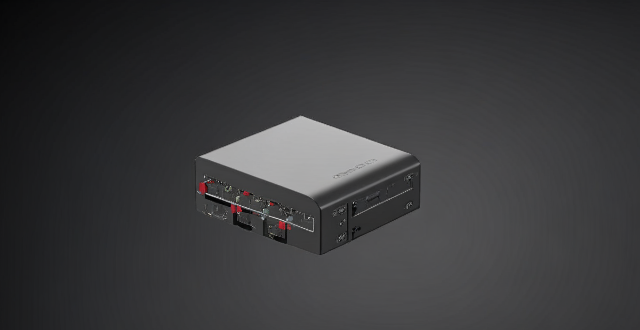
What is single motor drive ?
Single motor drive is a type of electric drive system that uses one motor to power a machine or device, offering efficiency, precision, simplicity, flexibility, and reliability. It has numerous applications across various industries, such as manufacturing, transportation, robotics, HVAC, and agriculture.

How does a combination motor drive work ?
Combination motor drives integrate VFD and servo controller functionalities to achieve precise speed and torque control for AC induction and permanent magnet synchronous motors. They enhance performance, reduce energy consumption, and extend motor lifespan by offering smooth speed control and reducing wear and tear. Key components include a VFD, servo controller, electric motor, encoder, and user interface. The system uses feedback from an encoder to adjust the motor's input signals, ensuring accurate motion profiles.
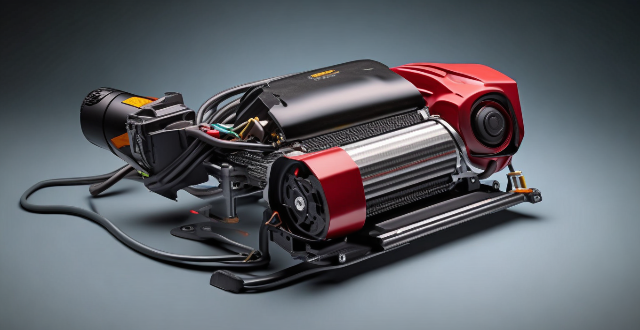
How does a single motor drive work ?
The motor drive converts incoming AC power to DC, controls the motor's speed via PWM, regulates its torque by monitoring current and adjusting voltage, and ensures proper operation through feedback control.

Is it possible to sync the desktop and document files between my Mac and iPhone ?
The article discusses the possibility of syncing desktop and document files between a Mac and an iPhone. It explains that this can be achieved through various methods, such as using iCloud Drive or third-party apps like Dropbox or Google Drive. The steps to set up each method are provided, along with a recommendation to choose the method that best suits one's needs and preferences.

How does a multi-motor drive system work ?
The text explains how a multi-motor drive system works, its components, and benefits. It describes the process of power conversion, control signals, motor operation, mechanical transmission, and feedback adjustment in such systems. The advantages include improved efficiency, increased redundancy, and enhanced control.

In what industries are drive motors most commonly used, and why ?
Drive motors are crucial across industries for efficiency, reliability, and precision. In transportation, they power vehicles, aircraft, and railways. Manufacturing uses them in robotics, machinery, and printing. Construction and agriculture rely on them for heavy equipment and farm machinery. Consumer products like appliances and power tools also use drive motors, as do medical devices and prosthetics. Their significance lies in efficient energy conversion, reliable performance, and precise operation.